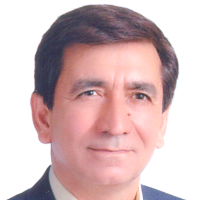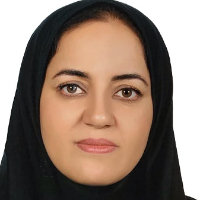Agronomic and Ecological Identification and Evaluation of Neglected Crops in Iranian Agroecosystems: Historical Dimensions of Agricultural Development
Author(s):
Article Type:
Research/Original Article (دارای رتبه معتبر)
Abstract:
IntroductionMost historians and archaeologist have known Iran as one of the main origins of human settlement and agriculture. Persians were the first human groups attempted to domesticate wild plants and animals. In this article we have tried to investigate the development of agriculture from ancient to nowadays with discussed and examined different historical sources.
Materials and MethodsTo investigate the evolutionary history of Iran agriculture, according to historical documents, the era was divided to separate periods: development of settlements and beginning of agriculture in Iranian plateau, from Achaemenes to the time of Alexander conquest, Alexander's conquest, Parthian, Sassanid, the presence of Arabs in Iran, late 9 to 13 AD, Mongols invasion, Safavids, Afsharian and Qajar and agriculture development was evaluated in each period.
Results and discussionDevelopment of agriculture in the Iranian plateau
Susa was the first civilization in the Iranian plateau and at that time collection of seeds was started by human. Cereals were grown and clothing was made from fiber crops that cultivated. Domestication of wild animals and plants has been recorded to start 10 thousand years ago in this area.
From Achaemenes to the time of Alexander conquest
Achaemenid kings had great interest in the exploitation of natural resources, water and soil, development of commerce and agriculture commodities and growing trees and plants (Paradises) around their palaces. At this time, the Iranians not only excelled in agriculture and animal husbandry, but also in engineering dams and digging irrigation canals, and Qanat.
Parthian
At the time of the Parthians the number and size of villages increased and the extent of cultivated land with irrigation systems were improved. Cultivation of industrial plants such as cotton and sesame was practiced, and trade between the nomads and villagers was common.
Sassanid
At this period construction of roads between Iran and other nations was developed leading to increased trade, including exports and imports of agricultural products. This exchange led to the introduction and cultivation of new plants in Iran. New crops such as rice, sugar cane and indigo were imported from India. Irrigation systems were significantly improved.
Presence of Arabs in Iran
With the Arab conquest, many dams built by Achaemenid and Sassanid were destroyed. During the Abbasid Caliphate (750 to 1258 AD) cultivation and agricultural production was reconsidered, so farmers began new agricultural activities.
Late 9 to 13 AD
Irrigation methods such as using river channels, digging Qanat, wells and dams were developed. Production of citrus was common. During this period by wisdom of some politicians such as Nezamalmolk agriculture was developed significantly.
Mongols invasion
The negative impact of the Mongol invasion of Iran was destruction of irrigation facilities and agricultural lands, reduction of area under crop cultivation, loss of livestock and farm labors. With emergence of influential personage such as Ghazan Khan, agriculture was developed. In this course, wheat and barley and fruits trees were cultivated widely. Irrigation systems were developed. In this era Kabar dam, one of the oldest arc dams was built near Qom.
Safavids
Among the kings of this dynasty, Shah Abbas made many efforts in order to develop agriculture. In his time, dams and canals were constructed and farmer's rights and safety were considered..
Afsharian
In this period many farmers were killed due to occurrence of frequent wars and Qanats, dams and irrigation systems were destroyed and therefore caused recession in agriculture. To transfer the water from Aras River to Mugan plain channels were constructed.
Qajar era
In this period agriculture was in a primitive state and there was not much knowledge on soil fertility improvement and crop production. At the time of Amirkabir industrial crops such as sugar cane were reintroduced. The first attempt in agricultural education was made in Muzaffar al-Din Shahs period and Falahat Muzaffari School was established. In the last century with the help of technology available, a significant achievement has been made in Iranian Agriculture.
ConclusionThe main part of our primogenitor efforts that are available in scientific and historical documents, is buried under huge weight of soil. It is necessary to discover these historical tremendous achievements of our primogenitor to the world. With simulation of these achievements we can revival the greatness of our ancient agriculture.
Materials and MethodsTo investigate the evolutionary history of Iran agriculture, according to historical documents, the era was divided to separate periods: development of settlements and beginning of agriculture in Iranian plateau, from Achaemenes to the time of Alexander conquest, Alexander's conquest, Parthian, Sassanid, the presence of Arabs in Iran, late 9 to 13 AD, Mongols invasion, Safavids, Afsharian and Qajar and agriculture development was evaluated in each period.
Results and discussionDevelopment of agriculture in the Iranian plateau
Susa was the first civilization in the Iranian plateau and at that time collection of seeds was started by human. Cereals were grown and clothing was made from fiber crops that cultivated. Domestication of wild animals and plants has been recorded to start 10 thousand years ago in this area.
From Achaemenes to the time of Alexander conquest
Achaemenid kings had great interest in the exploitation of natural resources, water and soil, development of commerce and agriculture commodities and growing trees and plants (Paradises) around their palaces. At this time, the Iranians not only excelled in agriculture and animal husbandry, but also in engineering dams and digging irrigation canals, and Qanat.
Parthian
At the time of the Parthians the number and size of villages increased and the extent of cultivated land with irrigation systems were improved. Cultivation of industrial plants such as cotton and sesame was practiced, and trade between the nomads and villagers was common.
Sassanid
At this period construction of roads between Iran and other nations was developed leading to increased trade, including exports and imports of agricultural products. This exchange led to the introduction and cultivation of new plants in Iran. New crops such as rice, sugar cane and indigo were imported from India. Irrigation systems were significantly improved.
Presence of Arabs in Iran
With the Arab conquest, many dams built by Achaemenid and Sassanid were destroyed. During the Abbasid Caliphate (750 to 1258 AD) cultivation and agricultural production was reconsidered, so farmers began new agricultural activities.
Late 9 to 13 AD
Irrigation methods such as using river channels, digging Qanat, wells and dams were developed. Production of citrus was common. During this period by wisdom of some politicians such as Nezamalmolk agriculture was developed significantly.
Mongols invasion
The negative impact of the Mongol invasion of Iran was destruction of irrigation facilities and agricultural lands, reduction of area under crop cultivation, loss of livestock and farm labors. With emergence of influential personage such as Ghazan Khan, agriculture was developed. In this course, wheat and barley and fruits trees were cultivated widely. Irrigation systems were developed. In this era Kabar dam, one of the oldest arc dams was built near Qom.
Safavids
Among the kings of this dynasty, Shah Abbas made many efforts in order to develop agriculture. In his time, dams and canals were constructed and farmer's rights and safety were considered..
Afsharian
In this period many farmers were killed due to occurrence of frequent wars and Qanats, dams and irrigation systems were destroyed and therefore caused recession in agriculture. To transfer the water from Aras River to Mugan plain channels were constructed.
Qajar era
In this period agriculture was in a primitive state and there was not much knowledge on soil fertility improvement and crop production. At the time of Amirkabir industrial crops such as sugar cane were reintroduced. The first attempt in agricultural education was made in Muzaffar al-Din Shahs period and Falahat Muzaffari School was established. In the last century with the help of technology available, a significant achievement has been made in Iranian Agriculture.
ConclusionThe main part of our primogenitor efforts that are available in scientific and historical documents, is buried under huge weight of soil. It is necessary to discover these historical tremendous achievements of our primogenitor to the world. With simulation of these achievements we can revival the greatness of our ancient agriculture.
Keywords:
Language:
Persian
Published:
Agroecology journal, Volume:10 Issue: 1, 2018
Pages:
22 to 34
magiran.com/p1823281
دانلود و مطالعه متن این مقاله با یکی از روشهای زیر امکان پذیر است:
اشتراک شخصی
با عضویت و پرداخت آنلاین حق اشتراک یکساله به مبلغ 1,390,000ريال میتوانید 70 عنوان مطلب دانلود کنید!
اشتراک سازمانی
به کتابخانه دانشگاه یا محل کار خود پیشنهاد کنید تا اشتراک سازمانی این پایگاه را برای دسترسی نامحدود همه کاربران به متن مطالب تهیه نمایند!
توجه!
- حق عضویت دریافتی صرف حمایت از نشریات عضو و نگهداری، تکمیل و توسعه مگیران میشود.
- پرداخت حق اشتراک و دانلود مقالات اجازه بازنشر آن در سایر رسانههای چاپی و دیجیتال را به کاربر نمیدهد.
In order to view content subscription is required
Personal subscription
Subscribe magiran.com for 70 € euros via PayPal and download 70 articles during a year.
Organization subscription
Please contact us to subscribe your university or library for unlimited access!





